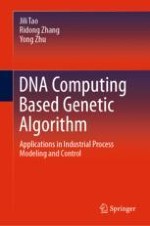
2020 | OriginalPaper | Buchkapitel
1. Introduction
verfasst von : Jili Tao, Ridong Zhang, Yong Zhu
Erschienen in: DNA Computing Based Genetic Algorithm
Verlag: Springer Singapore
Aktivieren Sie unsere intelligente Suche, um passende Fachinhalte oder Patente zu finden.
Wählen Sie Textabschnitte aus um mit Künstlicher Intelligenz passenden Patente zu finden. powered by
Markieren Sie Textabschnitte, um KI-gestützt weitere passende Inhalte zu finden. powered by